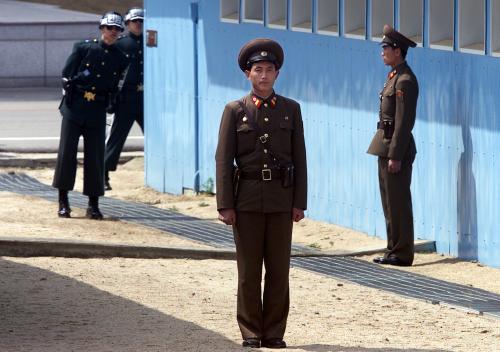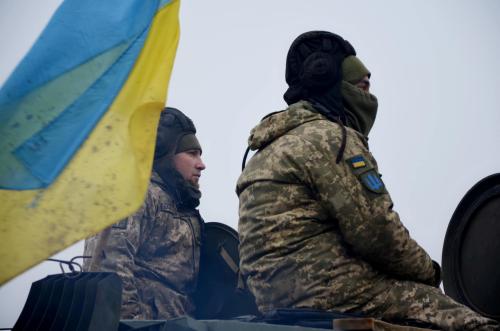In announcing that the United States and Russia had formally agreed to cut their nuclear forces over the next ten years, President George W. Bush claimed that the “treaty will liquidate the legacy of the cold war.” It does no such thing. Nor was this the goal—at least as far as the Bush administration was concerned.
Rather, what Bush sought—and which this treaty does despite the talk of cuts—is give the United States near total flexibility in deciding how many and what kinds of nuclear forces it can deploy in the years ahead. That Bush has achieved this objective through a negotiated treaty rather than by fiat as was his initial inclination is remarkable. But he has done so at the cost of at leaving Americans no better—and possibly much worse—off than if he had negotiate an agreement that truly liquidated the legacy of the cold war.
Bush came to office pledging to “leave the cold war behind” and “rethink the requirements of nuclear deterrence.” He promised to determine the “lowest possible level of nuclear forces consistent with our national security interests,” and then move to that level through unilateral action rather than through traditional arms control negotiations with Russia.
Bush unveiled the specifics of his plan last November. He announced the United States would reduce its strategic nuclear arsenal over the next ten years from its current level of 7,200 warheads to between 1,700 and 2,200 warheads. But he said nothing about making a formal, binding commitment. When Russian President Vladimir Putin suggested this pledge be enshrined in a treaty, Bush testily offered that he might agree to write it “down on a piece of paper.”
A month later, Bush announced the United States was withdrawing from the ABM Treaty barring the deployment of national missile defenses. Bush agreed to soften the blow to Moscow by codifying any offense arms cuts in a treaty. That was the commitment Bush made to Putin. And that was the commitment he kept by signing the agreement at the Moscow Summit in late May.
But it is important to understand clearly what this agreement is—and is not—about. The only binding commitment the United States and Russia will undertake in terms of the size of their forces is to deploy no more than 2,200 operationally deployed warheads in ten years time. The treaty does not require either country to hit any reduction targets along the way. Both are free to decide which weapons they will retire and when.
Further weakening the significance of the treaty—and directly undermining Bush?s claim that this treaty liquidates the cold war legacy—is its silence on what happens to weapons that are retired. These can be stored, put in reserve, or dismantled—whatever the parties wish. Neither side has undertaken an obligation to “liquidate” anything.
What happens in ten years? The treaty expires, unless both parties agree to continue it. So at the very moment the treaty?s most important provision kicks in, the treaty itself ceases to be binding. In short, except for one 24-hour period, neither the United States nor Russia can possibly violate their pledge to slash their arsenals. And if this constraint seems too onerous, both parties are also free to withdraw from the treaty by giving the other side 90-days notice.
President Bush trumpets this agreement because it gives the United States flexibility to change its nuclear forces as it sees fit. What is overlooked is that the agreement gives the same flexibility to Russia—one reason it appeals to the Kremlin. But that flexibility may damage American interests.
That could happen if U.S.-Russian relations turn frosty once again. The administration is probably right that a cash-strapped Russia has to slash its nuclear forces. But economic conditions can change. A future Russian government may be able to afford a larger nuclear arsenal. The United States certainly could match a Russian nuclear build-up, but a chance to prevent a new arms race would be lost.
Even in the more likely event that U.S.-Russian relations remain friendly, agreements that value flexibility over all else remain a problem. A Russia that cannot afford to maintain a large nuclear force probably also will not devote sufficient funds to properly storing retired warheads. Those warheads—which will number in the thousands—immediately become a tempting target groups like Al Qaeda.
Rather than continuing with treaties that are all form and no substance, Washington and Moscow should head back to the negotiating table. They should hammer out a schedule for weapons cuts and procedures for dismantling retired weapons. Yes, the United States would have to sacrifice some flexibility. But it would get something more important in return—enhanced security.



Commentary
Op-edNuclear Treaty Is all Style, No Substance
May 21, 2002